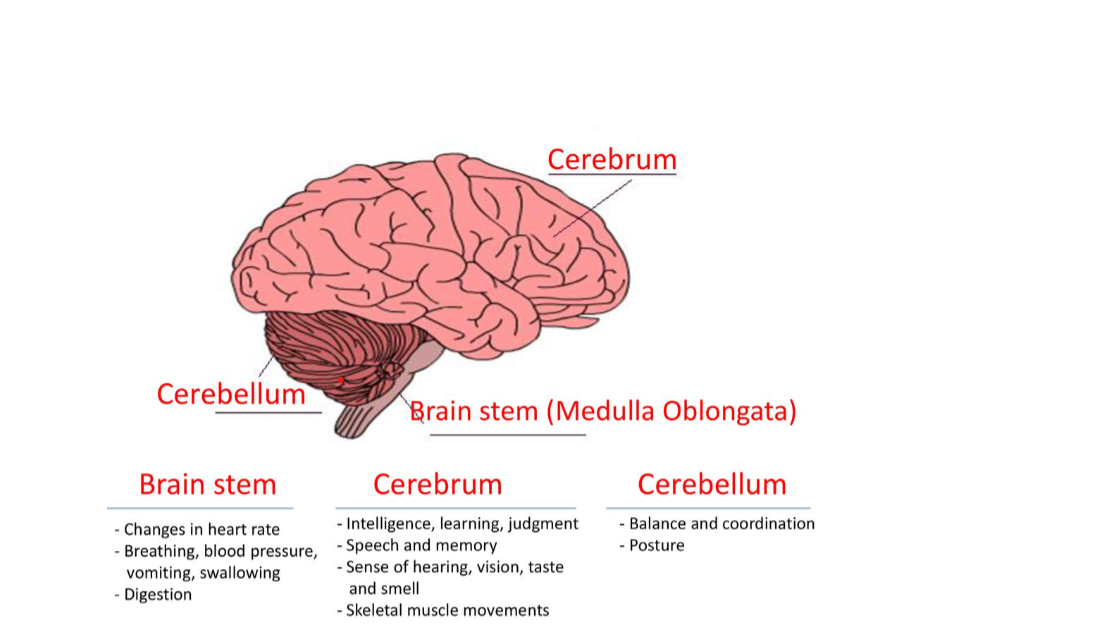Midbrain
The midbrain (or mesencephalon) is a very complex structure
with a range of different neuron clusters (nuclei and colliculi), neural
pathways and other structures. These features facilitate various functions,
from hearing and movement to calculating responses and environmental
changes. The midbrain also contains the substantia nigra, an area affected
by Parkinson’s disease that is rich in dopamine neurons and part of the
basal ganglia, which enables movement and coordination.
Pons
The pons is the origin for four of the 12 cranial nerves, which enable a
range of activities such as tear production, chewing, blinking, focusing
vision, balance, hearing and facial expression. Named for the Latin word for
“bridge,” the pons is the connection between the midbrain and the medulla.
Medulla
At the bottom of the brainstem, the medulla is where the brain
meets the spinal cord. The medulla is essential to survival. Functions of the
medulla regulate many bodily activities, including heart rhythm, breathing,
blood flow, and oxygen and carbon dioxide levels. The medulla produces
reflexive activities such as sneezing, vomiting, coughing and swallowing.
